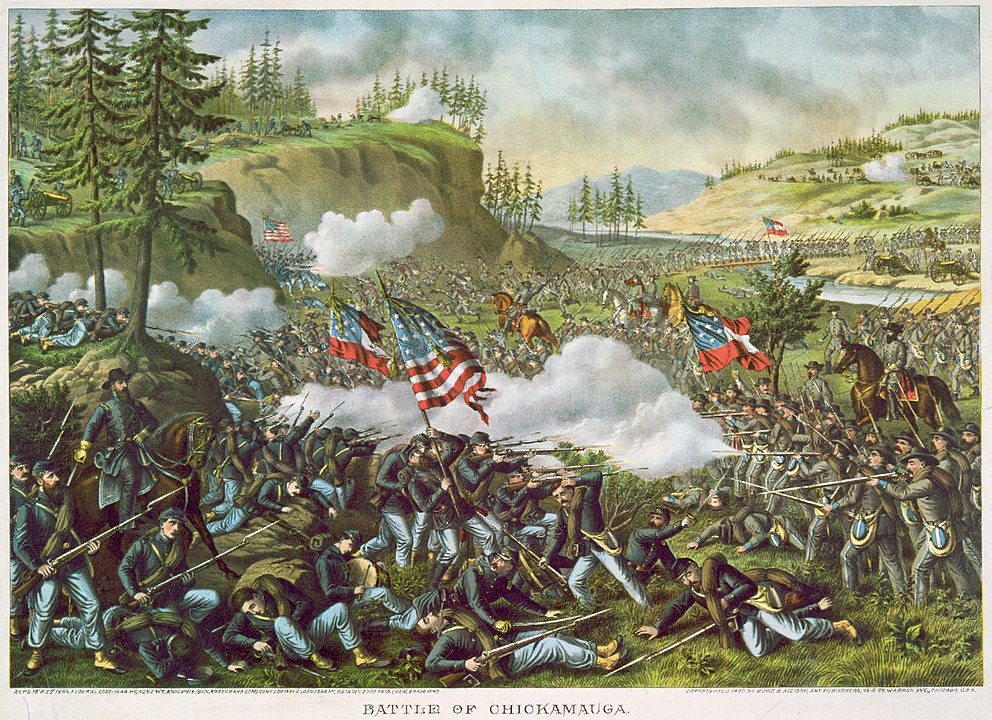Road Trip Through History: Chickamauga and Chattanooga
Recently My Own True Love and I made a difficult trip from Chicago to Atlanta and back. Normally, we would have flown, but with the continuing threat of Covid we chose to drive. And since we were driving, we decided to make a couple of history nerd stops to soothe our souls. After all, the Chickamauga and Chattanooga National Military Park (in the northwest corner of Georgia, near the Tennessee border) and its smaller sister park of Lookout Mountain (in Tennessee) were more or less on the way.
The National Park Service did not disappoint.
We stopped at the Chickamauga and Chattanooga National Military Park on the way down and at Lookout Mountain on the way back. For purposes of this blog post I’m treating them as one park because they are all part of one big story.
Before we visited the parks I knew two things about the Civil War battles for the control of Chattanooga:
- Chattanooga was an important railway center and the gateway to the Confederacy from the West. Control of Chattanooga would give the Union greater control over its supply chain and access to the industrial centers of the Confederacy.
- The battle of Chickamauga was one of the bloodiest battles of the war. (I knew this thanks largely to reading this short story by Ambrose Bierce in high school. (1) )
Both of those things are, in fact, true. (2) Our visit to the park added story, depth and color to those dry bones.
We began our visit by joining a caravan tour of the Chickamauga battlefield led by a park ranger/historian.(3) He was a good story teller and brought the battle to life. He didn’t just recite troop movements, though he did give a clear description of what men did at each step of the battle and why. He put the battle into historical context. He told stories about the people who fought, and about civilians whose lives were affected by the battle. (5) He ended the program with a discussion of the subsequent battle for Chattanooga, in which the Confederate general snatched defeat from the jaws of victory.
An excellent short film at the main park and exhibits at the visitors’ centers at both parks reinforced and expanded on the ranger’s talk. (The film made me cry.)
I’m not going to recap the action of the battles here. There are plenty of places where you can get that information. Here are the things, large and small, that caught my imagination:
- The Confederates, led by Gen. Braxton Bragg, won the battle of Chickamauga but that victory didn’t accomplish anything. At the end of the battle, the Union army, led by Gen. William Rosencrans, retreated to Chattanooga–which was the prize the two armies were fighting to control. Instead of attacking the battered Union forces, Bragg chose to besiege Chattanooga at a distance. The idea was that the cold, tired and hungry Confederate army would starve the cold, tired and hungry Union army into submission. After a month, General Grant arrived with reinforcements and set up a supply line into the city. The soldiers called the trains that brought in the supplies the Cracker Train, after the hardtack that was one of their main provisions. My guess is I will remember the Cracker Train long after I’ve lost all the other details of the battle.
- One of Abraham Lincoln’s brothers-in-law, Benjamin Hardin Helm, was a Confederate general who died at Chickamauga. (In fact, Lincoln had five brothers-in-law in the Confederate army.) Helm was a West Point graduate. Lincoln had urged him to remain in the Union army and greatly mourned his death. After his death, Helm’s wife lived for a time in the White House at the invitation of her sister, Mary Todd Lincoln. This must have been uncomfortable for all concerned. After several months, Emilie Todd Helm returned home to Kentucky. The ranger made the point that Mary Todd Lincoln suffered loss after loss in her years as the First Lady, with Lincoln’s death being the last and most devastating. Beyond that, I was struck by the fact that the truism that the war divided families went all the way to the White House.
• The ranger and the various exhibits all described generals Bragg and Rosencrans as being eccentric, but they never said in what way. There are so many ways to be eccentric. I want to know more.
• The Battle of Lookout Mountain–which became known as the Battle Above the Clouds–ended with a frenzied charge by Union troops up the fog-enshrouded mountain. Looking down the side of the mountain, I could not imagine how they did it.
• The Chickamauga and Chattanooga National Military Park was the first national military park to be created, at the instigation of veterans from both sides of the battle.
Definitely worth a stop if you are a history buff.
1) Unlike Stephen Crane, who wrote The Red Badge of Courage, Bierce actually fought in the war. But I digress.
2) This is not always the case with the things I think I know going in.
3) In case you haven’t done one of these, the ranger leads a caravan of people driving their own cars through the battlefield, like a weird funeral cortege. (4) At critical points, everyone piles out for a brief lecture.
(4) Not entirely inappropriate here given the breathtaking number of deaths that occurred on the battlefield.
(5) As far as I’m concerned, that’s the way military history should be told. Otherwise you’re just moving tin soldiers around on a topographic model of a battlefield.
Note: Thanks to sharp-eyed reader, Jack French, who pointed out that I didn’t tell you what states the parks are in. I’ve added the info, and I offer you this link to the NPS website that includes information about both parks: https://www.nps.gov/chch/index.htm





